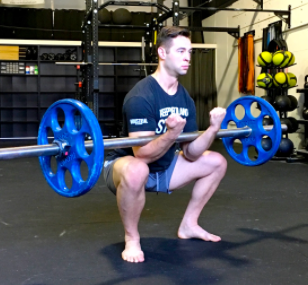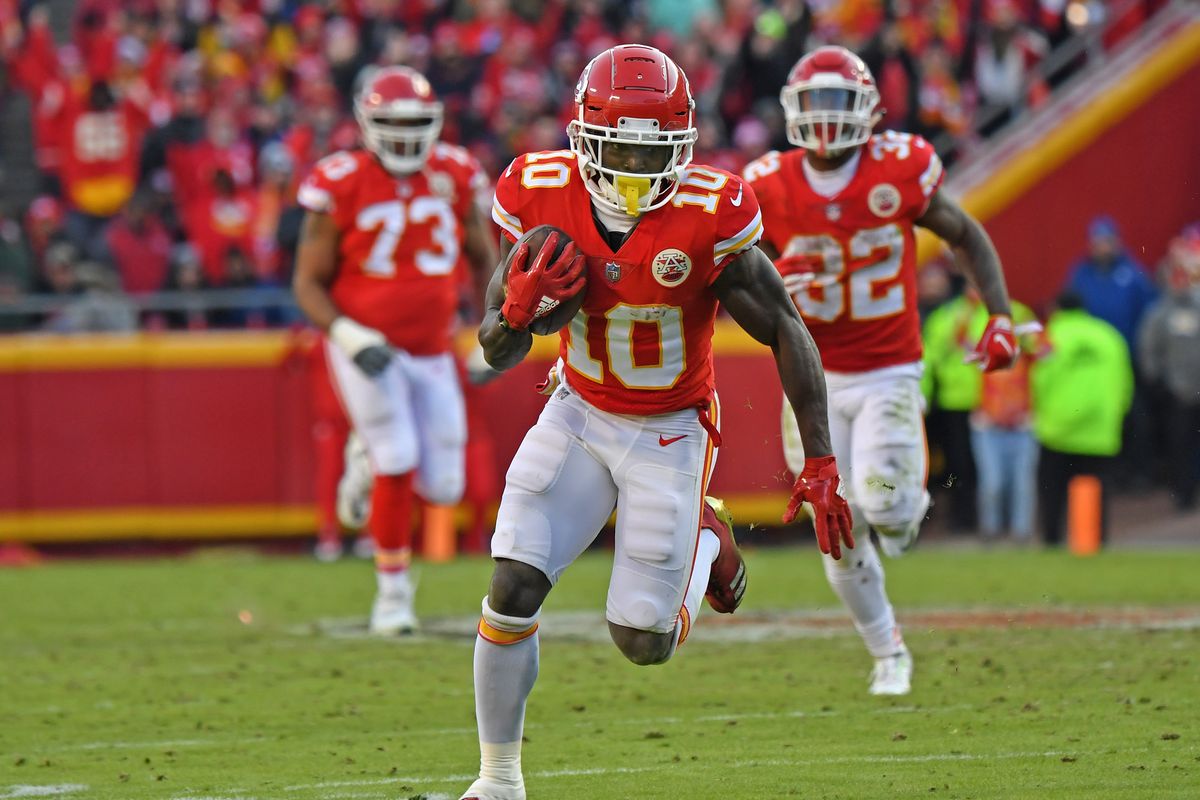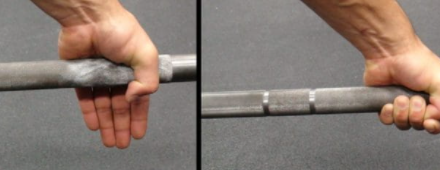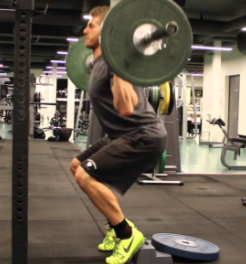Teaching high school athletes to effectively and proficiently perform strength exercises is hard. I joke that there is one variable that we cannot account for…THE TEENAGE MIND! As high school coaches we have to program in ways that will increase strength gains without overloading their minds with too much information. I have coached at schools where the average ACT is 24 and at others where the average ACT was 16. The programming has to be much different at those schools and this is something I struggle with every day.
I have found that the more I change up the exercises and the more new things I throw at high schoolers the more our workouts suffer. We end up doing too much teaching, we are not working with enough weight, or at a proper pace. Because of this I really just try to keep the exercises the same but make minor adjustments to some exercises so the body has to adapt without too much thinking. Below are some quick and easy ideas to vary workouts in order to train the nervous system and increase strength gains.
Combine Auxiliary Exercises
We are all short on time so we need to maximize our weight room sessions. One of the ways to maximize our time is to combine exercises and make our programming “dense” so we can integrate as many athletic concepts as possible. Some examples of combining exercises are:
Sign up for Football For Coaches Premium Member to get video links to each exercise on this Exercise Checklist.
Become a Patron!Deadlift/Shrugs
Backward or Forward Lunges/Lateral Raises
Backward Forward Lunges/Curls
Side-Lunges/Dumbbell Tricep Extension.
Forward Step-Ups/Shoulder Press
Even though there is a very important place for doing these exercises independently, making the entire body work together will train the nervous system to enhance overall athletic ability. Forward Step-Ups/Shoulder Press is a great way to train receivers and defensive backs to go to the highest point with quality body control. I also use this exercise for basketball players to practice finishing at the rim.
Every programming decision does have a tradeoff and one of the negatives of combining exercises is one muscle group will always suffer. For example, if you combine Forward Lunges and Curls, the legs will suffer because most athletes can lunge much more than they can curl. If you try to use the appropriate weight for Lunges, most athletes cannot also curl that amount of weight. The moral of the story is combine exercises if you want to train the nervous system and separate the exercises if you want to work on strength.
Uneven Loading
While playing sports, limbs are rarely moving in the exact same way at the same time. Ball carriers are squeezing the ball with one arm at the same time they are stiff-arming someone, defensive backs are arm-barring a receiver while reaching for a pass, and zone blocking offensive lineman are sometimes blocking different people with their two hands. To account for this in the weightroom, each individual limb needs to be able to work independently.
The reason I like these movements is because more muscle has to be activated because the body is forced to stabilize itself. These exercises are more difficult because it is harder to carry a load in one arm (we know this when we pick up just one full bucket) and because the exercise takes longer to perform. Some of the negatives of one limbed movements are that each exercise takes twice as long, it is harder to lift heavier weights, and just like with combining exercises, some body parts will also suffer in terms of strength gains.
To accomplish uneven loading you can do the following exercises with dumbbells, cables, or on hammer strength equipment:
Alternating Pattern: To see the first pattern, click here. To see the second pattern, click here. I like these exercises because I can do the same amount of weight in almost the exact same amount of time.
One-At-A-Time Pattern: You can also use only one limb at a time. If it is hard for your athletes to stay balanced, they can hold an identical dumbbell in their other hand while keeping it stationary. Most programs do a lot of unilateral lower body exercises and this is a way to get that concept in for upper body exercises.
Here are a couple of other examples of uneven loading:
Change The Load Point
During the COVID-19 quarantine, I was just trying to make due with the equipment that I had at home. I had two adjustable dumbbells, bands, and an adjustable bench. For Squat, I would do Goblet Squat, Overhead Squat, and squatting with dumbbells in each hand. When the quarantine ended I finally did Back Squat for the first time in a couple months and I could not believe how sore I was the next day. I worked out hard during the break so I did not expect my hips to be as sore as they were. Even though my strength did not drastically drop, having the bar on my back changed everything for which muscles were activated. That is just one example of why we should change the load point of exercises and the pictures below show some of the different load points for Squat.
Change Time Under Tension
When developing a strength program, good programs lift weights but great programs develop different types of strengths. All football players need to be able to be explosive, resist forces, and hold forces in place. All of those types will improve by doing any type of strength training but this takes it to a much higher level.
Sign up for Football For Coaches Premium Member to get video links to each exercise on this Exercise Checklist.
Become a Patron!Ballistic Lifting
Why: Muscles need to learn to move weight fast and transition quickly
Muscle Adaptation: Speed & Power
Example Video: Ballistic Bench Press
Cadence: Fast down and fast up
Weight Used: 40-45% of their 1-Rep Max
Football Application: Used for developing speed and power to Throw, Kick, and Strike
Dynamic Lifting
Why: Muscles need to learn to move weight fast and transition quickly
Muscle Adaptation: Speed & Power
Example Video: Dynamic Bench Press
Cadence: Normal down and fast up
Weight Used: 40-45% of their 1-Rep Max
Football Application: Used for developing speed and power to Throw, Kick, and Strike
Isometric Lifting
Why: Football players need to be able to stop their limbs so they can transition quickly
Muscle Adaptation: The muscle needs to be comfortable sitting in the stretch reflex and then firing out of it. Greater hypertrophy will occur because of the increased time-under-tension.
Example Video: Isometric Squat
Cadence: Pause for 2 seconds at the transition points
Weight Used: 65-80% of their 1-Rep Max
Football Application: Used anytime a player needs to hold a player in place and applies most to blocking and tackling. Also, every play begins with almost all players in an isometric position that transitions into a dynamic movement.
Eccentric Lifting
Why: All players have to resist opposing forces
Muscle Adaptation: The eccentric portion (negative of an exercise) is where the most muscle fiber tears and results in greater hypertrophy because of the increased time-under-tension.
Example Video: Eccentric Squat
Cadence: Slow on the way down and normal up
Weight Used: 65-80% of their 1-Rep Max
Football Application: Used for Blocking and Block Destruction
Myotatic Lifting
Why: Athletes have to be able to move within their stretch reflex.
Muscle Adaptation: Working within the stretch reflex taxes the nervous system since the body is used to getting into the stretch reflex and then immediately getting out of it. Greater hypertrophy will occur because of the increased time-under-tension.
Example Video: Myotatic Squat
Cadence: ¼ rep at the transition point
Weight Used: 65-80% of their 1-Rep Max
Football Application: Used for transitioning while cutting and being pushed by an opposing player.
In terms of programming, I just rotate through each different time under tension each week. Here are some ideas on how to program time under tension exercises:
- One week I will make all of the functional exercises Isometric and the next week Eccentric, etc.
- The different pacing could also be done during the first set of every exercise for that day.
- Pick just a couple of exercises each day.
- Program these exercises to do on the machines.
Remember that these different patterns put an extra strain on the nervous system so it might impact their recovery time. When I do a whole week of eccentric or myotatic exercises, my athletes will be dragging by the end of the week. For my own workouts, Eccentric and Myotatic exercises tax me to the point that I need to take two days off afterwards. Younger athletes will be able to recover much better than me though because I am 44 years old.
Michael Jordan’s trainer, Tim Grover, used time under tension work to help Jordan get stronger and jump higher. If you have not already done so, read Jump Attack, because the book details what they did. One of the concepts they implemented was to use Isometric exercises before actually doing the exercise. For example, if they were doing Bench Press, Jordan would have to hold some heavy weight at the top or bottom of the lift for a couple minutes. It would tax the nervous system so the body would have to recruit more motor units. Once they forced the body to recruit the extra motor units, they would start their normal set and rep programming and forced the body to recruit even more motor units. The goal of this thought process was to make every muscle fiber and motor neuron have to engage during the workout.
Variable Loads
We all know that the “top” of an exercise is the easiest part. For most exercises, the hardest part of an exercise is when the joint is at a 90 degree angle and the easiest part is when the limb is at an obtuse angle. To make the obtuse angle portion harder, variable loads can be used. The easiest, least expensive, and most common way to make this happen is to use bands or chains and there are a few examples below:
Another interesting (but very expensive) way to train with variable loads is to use Keiser Machines. With these machines, the user decides how much hydraulic pressure will be used. The exercise gets harder as the air gets compacted during the movement. Even though most of us will never have Keiser Machines in our weight rooms, the science behind it is still very interesting and applicable.
Programming
Each week you will not be able to integrate everyone of these variants but you can rotate through them week by week. If you want to do Forward Lunges each week, you could easily do:
WEEK 1: Isometric DB Goblet Forward Lunges w/ Rotation
WEEK 2: Eccentric Barbell Forward Lunges w/ Uneven Loading
WEEK 3: Myotatic Plate Forward Lunges w/ Shoulder Press
WEEK 4: Dynamic Forward Lunges w/ Bands
Sign up for Football For Coaches Premium Member to get video links to each exercise on this Exercise Checklist.
Become a Patron!Summary
- Combine exercises if you want to train the nervous system and save time
- Do not combine exercises if you want to work on strength
- Make limbs move in a variety of patterns and independently of each other
- Train the nervous system so the entire body will work together
- Program these elements in a systematic way to ensure that all concepts get covered.
- Add bands and chains to exercises to increase the load when exercises are the easiest.
- Change the time under tension for different exercises to increase hypertrophy and motor unit activation.
- Change the load point on different exercises to activate and target certain muscles.
If you are interested in learning more you can go to the resources page on my website (https://exceleratead.com/training-theory) to find my FREE and moderately priced CoachTube Courses, Coaches Choice Videos, and a variety of other training articles and resources. My contact information is on my website so please feel free to email me with any questions.





